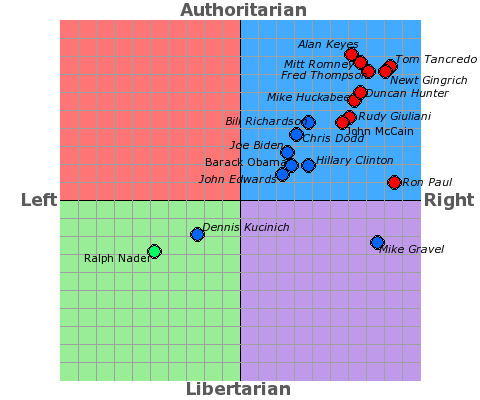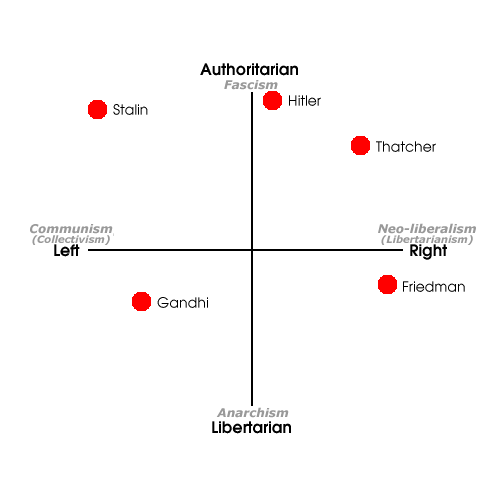Michael-5 said:
kaneada said:
Michael-5 said:
A. I argue band hand guns, not all guns. If you're going to compare this to alcohol, my suggested method of gun control already applies to alcohol. I argue to ban the most dangerous guns, guess what type of alcohol is banned in the USA and Canada? Anything above 40%, stronger alcohol, alcohol which serves no purpose like handguns, and is only detrimental to society.
B. Prohibition is for alcohol, alcohol clearly has a use. Many countries band guns and have completly healthy economies (Japan and Korea), many others heavily restrict them (Singapore, Mongolia and much of Eastern Europe) and again perfectly reasonable economies. I'm not aware of any developed country which bans alcohol and is doing well.
What's your point in your last sentence, what do you expect society to do to prevent criminals from becoming criminals? I agree here, but you shouldn't put the onus on either party, government and society should be resposible for creating organizations which teach people good morals
|
A. You're wrong. 95.6% is the highest alcohol content legal in liquor in the USA under federal law the highest being Everclear, which is banned in some states, but not under Federal Law.
B. Hand guns do have a use, self protection...which is a legal right in this country.
C. How are handguns more dangerous than assult rifles? I'd argue that both are equally dangerous in the wrong hands. After all, assult rifles were used in the Columbine shooting. If you're going for the concealment factor, Rifles are harder to conceal, but not impossible by any stretch of the imagination. Live in the deep south for 14 years and you learn a thing or to about how to handle and properly conceal weapons.
D. Respsonible gun owners are not detrimental to society. I own two. To this day I've never had to shoot anyone or even threaten anyone with a gun.
E. Prohibiting guns, all or in part, would largely have the same consequences as alcohol prohibition in the states. You don't give society a freedom and then take it away, then expect there not to be public outcry, especially when that largely removes ones freedom to protect oneself. As for your argument against gun ownership in Asia, China is restricted to Military and Law Enforcement. Japan is Rifles only for hunting and heavy permitting is required. In Korea it is flat out illegal for civilians to own guns. Those societies have always been heavily regulated and they do not have a tradition of gun personal gun ownership. What this should tell us is that this has never been a demand of the citzens and therefore has always been a non-issue. In America on the other hand, we've always had this tradtion of personal gun ownership, trying to take that away, once again creates a need for private illegal markets, where far worse people would maintain possession and sale and we would therefore would increase crime, hence the prohibition comparison.
F. Clairifying my last sentence. I am rerfering to American culture as being the source that produces criminals. For example, poor people tend to fight over resouces espeically income producing ones, which is why poorer neighborhoods tend to have organized gangs that deal weapons and drugs and will commonly fight for territory in order to improve buisness for themselves. Another example would be the bullying that goes on in primarily middle class societies. This one is slightly more complicated, not only because of the causes for the violence, but also the violence itself varies. There are many studies that exist that bring many possible and not necessarily mutually exclusive reasons for such behavior.
Essentially your proposal only addresses a symptom and does so poorly...The cause for the violent mis-use of weapons exists in the injustices produced by our society not our laws or rights.
|
A. In Canada it's 40%, I assumed it was the same in the USA. My bad, but hey, this is probably a big reason why the US homicide rate is that much higher in the USA then Canada.
B. Hand guns have a use for self protection? Against what other hand gun users? You can fit a Rifle in a car NP, and a Rifle is more intimidating for defence in the home.
C. Where do I argue hand guns being more dangerous then assault rifles? I correlated them because hand guns are the next one down due to their small size and conceilability. Yes Rifles are concealable, but it's more difficult to have one hidden and available for immediate use, and it's much harder to run with one in your pants, or down your back. With that in mind, it's much harder to surprise people, and rob a store, or shoot someone.
D. Gun owners in Toronto would be detrimental to society since very few people carry a weapon. I don't even think it's legal here, and I've never seen someone other then a cop carry a gun before, at least in Canada. In the states it's probably different because people are so desensitized to guns, but low crime rates due to intimidation over preventive means is not the way to go IMO.
E. No it won't, Alcohol is heavily prohibited here, we went through the same prohibition you did (except it was much shorter here), and were fine. The second amendment is so old, the fact that people hide behind that still is amazing. Yes you have the freedom to carry a gun, but others should be free to roam town without the fear of being shot. In the states people of minorities and gays are heavily oppressed, I'm sure many of them don't feel comfortable with groups of white people carrying handguns, loaded.
However I agree about taking guns away, a lot of people, people like you and others from the south, would heavily oppose it. I severly doubt you'll see people shooting each other to import illegal hand guns, but people won't accept it. This is why it's important to teach people that it's immoral to kill, so that over time people won't see a need for it. I mean people don't carry guns here for a reason in Canada, we don't need one for "protection."
F. I agree, but having hand guns readily available for people such as these is definatly not a smart idea. Could you imagine a gang war turf with rifles and knives? First of all, gangstas would have to disguard their weapons in order to run from cops on neighbouring gangs due to their size, and second they would be much easier to identify.
I 100% agree, banning hand guns is not as fundamental of a cause as helping those in poverty and teaching kids good morals from a young age. I would even argue that you guys in the states should teach kids that it's bad to use guns outside of hunting. However I see no positive with keeping handguns legal.
However keep in mind, I'm not from the southern states. I'm from Canada, out homicide rates are significantly lower despite population, geology, population dencity, ethnicity (Toronto is the most multicultural city in North America, with the highest gay population in any city in NA), or anything. Just the idea of needing a gun for "protection" is absurd to me. If your a vulnerable individual and you really want protection, get a taser gun, or mace, it works just as well.
Find me a study which says hand guns work better for self defence for rape victims then mace or taser guns. I garentee you that is not the case in Canada, but it could be in the states.
The idea just seems wack to me.
|
A. I'd have to reasearch the effects of alcohol on the murder rate, but I would assume that most people with the intent of comitting a premeditated murder are probably clear headed and focused. However, I could be wrong about that.
B. There are many reasons a person might need to protect themselves in America. Personally, 31 years living in pretty much every Southern state in the US I've yet to find an actual need to defend myself in that manner. Once again I did state that I've never had to threaten anyone with a gun, as a matter of fact I don't even have a concealed carry permit and don't carry mine with me anywhere.
C. It was implied in your proposal to ban them. That being said, no its really not any harder for someone to hold up a store with an assult rifle. The average American does not carry a fire arm on their person at all times and even if so most of us aren't trained to handle the fear of having a gun pointed in our direction. You're making a lot of assumptions here about how one person would commit an armed robbery if all they had were an assult or hunting rifle. Most would opt to conceal their idenity rather than possess a weapon. You also put a lot of faith in Law Enforcement, which is nowhere near adept at solving violent crimes as they would lead you to believe on TV.
D. Perhaps you're right about that, but once again read point B. You have to realize, as a Candian, what you see about America is heavily sensationalized and limited to very small parts of this country. Like I said I've lived in every state in the South (on the east coast) and now live in Washington DC. I've never once felt threatened by a citizen and this is a pretty diverse neighborhood.
E. Different cultures, different results. You aren't instilled from birth with the same sense of personal Liberty and individualism that we are. They take something away from you, you say oh well, they take it away from us and organized crime on a level this country had never seen rose. You have to consider the people and the values. You'd only be putting those items in worse peoples hands. Who would you rather have access to weapons, someone like me who keeps his responsibliy locked away in a box in his home, or some drug cartel who just realized they could get even richer because now certain classes of civilian firearms are now banned?
Also you have to consider the politics of this society. Most of us are very weary of our government and do not want them interfering in our personal buisness or telling us how to conduct ourselves, which points to the sense of Liberty I defined earlier. Also consider that most of us want large scale law enforcement operations minimized, largely because of the cost to the tax payer, and its ineffectiveness at stopping the actual problems in this country, The War on Drugs being a great example of that.
Lastly, gun ownership is an idea perpetuated on the idea that other people own guns and therefore I should own one, so I understand why it may be non-sensical to someone like you who probably lives in a society where only Law Enforcement can possess weapons. Once again I point to Asian countries where personal gun ownership has never been an issue, because its always been prohibited, where as in this country has been glorified and most likely always will be.
F. Once again heavy assumptions about American culture. Cops do not heavily patrol gang riddled neighborhoods like you see on TV. A gang fight occurs and cops do the smart thing, duck and get out of the way until the bullets stop flying. More often than not, fully automatic weapons are involved in these as well, so the idea that gangs don't already use these in large scale fights is absurd in and of itself.
Once again different cultures have to be handled differently to keep them stable. Remember that whole ridiculous idea that the USA should blanket the Middle East in Democracy to fix all their problems? How well did that work out?
Lastly, I won't look for a study showing which weapon has the best chance of preventing a rape because statistically the idea that anyone will be raped in a dark alley by an unknown assailant is absurdly low (I think it was less than 9% of rapes occur in this condition where the total number of rapes is only around 81k in a population density of 313 million people.) Most rapes occur in the same fashions that most murders occur, by someone known to the vicitim.
This is fun! Your turn!
 which is rare. The result may therefore be considered statistically significant evidence that the coins are not fair"
which is rare. The result may therefore be considered statistically significant evidence that the coins are not fair"
























































